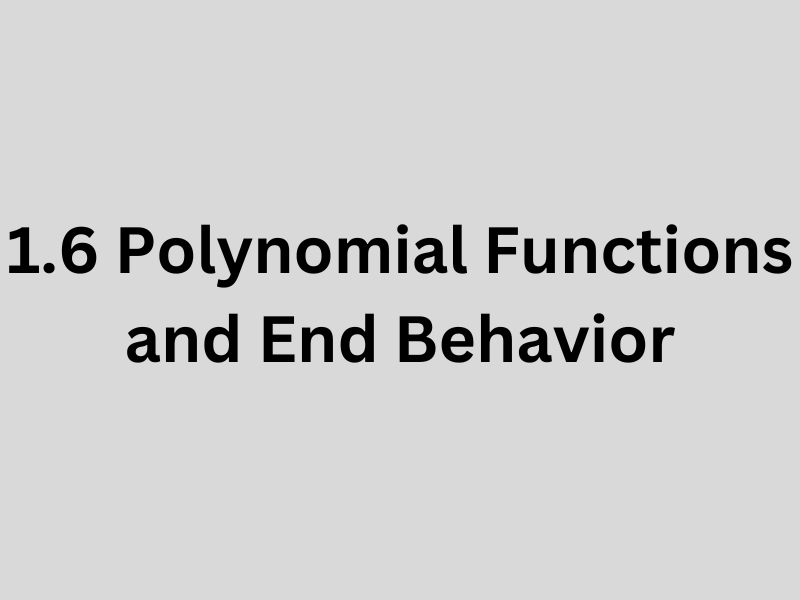In AP Precalculus, Unit 1A is foundational, covering Polynomial and Rational Functions. These mathematical concepts are not only crucial for excelling in calculus but also form the backbone of many advanced mathematical topics. In this blog post, we’ll explore the intricacies of polynomial and rational functions, offer clear examples, and provide tips to help students grasp and apply these concepts effectively.
What are Polynomial Functions?
Polynomial functions are mathematical expressions involving a sum of powers of a variable multiplied by coefficients. They are written in the form f(x)=anxn+an−1xn−1+…+a1x+a0, where an,an−1,…,a0 are constants, and n is a non-negative integer. These functions are fundamental in calculus and algebra for modeling various real-world scenarios.
Key Concepts in Polynomial Functions:
- Degree and Leading Coefficient: The highest exponent of the variable x determines the degree of the polynomial, while the leading coefficient is the coefficient of the term with the highest degree.
- Roots and Zeros: Roots (or zeros) of a polynomial are the values of x that make the polynomial equal to zero.
- Graphing: The graph of a polynomial function can provide visual insights into its behavior, including intercepts and end behavior.
What are Rational Functions?
Rational functions are ratios of two polynomials. Formally, a rational function is expressed as f(x)=q(x)p(x), where p(x) and q(x) are polynomial functions. Understanding these functions involves looking at their domains, asymptotes, and intercepts, which are critical for solving complex equations in calculus.
Key Concepts in Rational Functions:
- Vertical Asymptotes: These occur where the denominator q(x)=0 and the function heads towards infinity.
- Horizontal Asymptotes: Determined by the degrees of the numerator and the denominator, these describe the behavior of the function as x approaches infinity.
- Holes: Occur where both the numerator and the denominator are zero at the same value of x, indicating a point removed from the function’s graph.
Studying Tips for Polynomial and Rational Functions
- Master Factoring Techniques: Efficiently factor polynomials to find zeros and simplify rational functions.
- Understand Long Division and Synthetic Division: These methods are vital for dividing polynomials, especially when simplifying rational expressions.
- Utilize Graphing Calculators: A graphing calculator can be a powerful tool for visualizing the behaviors of these functions and understanding their graphical features.
Common Challenges and Solutions
Students often struggle with the abstract nature of polynomial and rational functions. Here are some ways to tackle these challenges:
- Practice Problem Sets: Regularly solving diverse problems can improve familiarity and comfort with these functions.
- Visual Learning Aids: Graphs and diagrams help visualize and understand asymptotes, intercepts, and other critical features.
- Peer Discussions: Discussing and explaining concepts to peers can reinforce understanding and unveil different problem-solving approaches.
Conclusion
Polynomial and rational functions are more than just precalculus topics; they are essential tools for modeling and solving real-world problems. By building a solid understanding of these functions in AP Precalculus Unit 1A, students can prepare themselves for more advanced studies in mathematics and related fields.
Mastering these functions opens the door to a deeper comprehension of mathematical relationships and enhances analytical skills, providing a strong foundation for success in AP Calculus and beyond.





